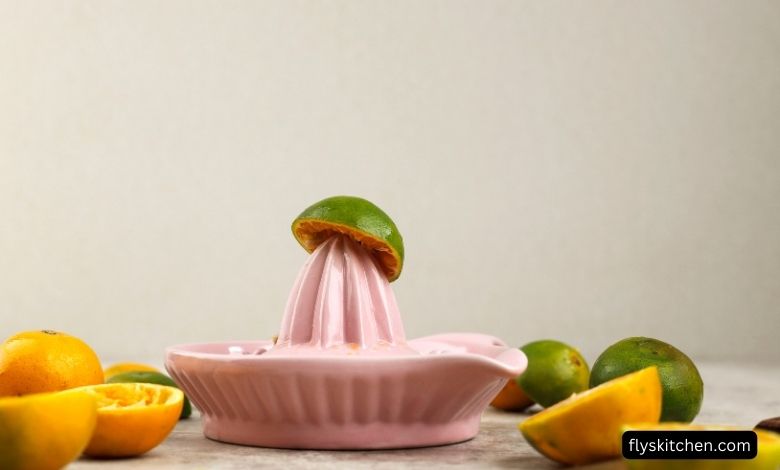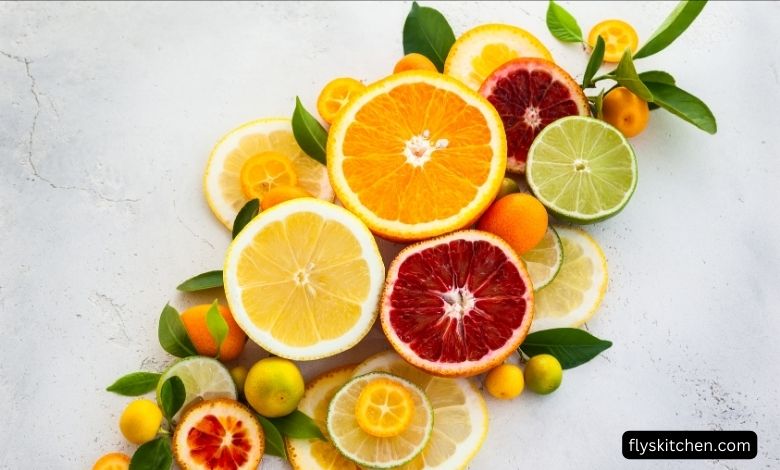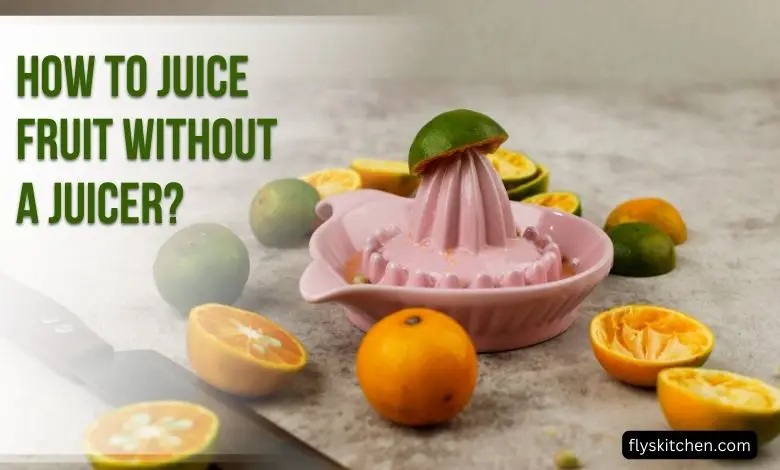Juicing fresh fruits and vegetables is a great way to get an extra dose of vitamins, minerals, and antioxidants into your diet. While having a juicer makes juicing convenient, you don’t actually need any special equipment to make your own healthy juices at home. With just a few simple tools found in most kitchens, you can easily juice fruit without a juicer.
Contents
Why Juice Fruit Without a Juicer?
There are several benefits to juicing without a juicer:
- Cost savings – Juicers can be expensive appliances, ranging anywhere from $50 to $400. Juicing without a juicer allows you to get all the same nutrients for free.
- Convenience – Many juicer models are bulky and require time to assemble and disassemble the parts. Juicing by hand takes just minutes.
- Versatility – Hand juicing allows you to control the texture of your juice, from smooth juices to thicker, pulpier varieties.
- No electricity required – You can juice whenever and wherever you want, even when camping or during a power outage.
For these reasons, learning how to juice without a juicer is a handy skill to have. Keep reading to learn how.

Choosing Fruit to Juice
Almost any fruit can be juiced without a juicer, but some varieties contain more juice and are easier to work with. The best fruits for juicing by hand include:
- Citrus fruits – Lemons, limes, oranges, and grapefruit have high water content. They can simply be squeezed by hand or with a reamer.
- Berries – Strawberries, blueberries, raspberries, and blackberries squash easily and produce juicy pulp.
- Melons – Watermelon, cantaloupe, and honeydew have a high liquid content. Cubes can be mashed or blended.
- Pineapple – Contains the enzyme bromelain, which acts as an anti-inflammatory. Pineapple flesh can be squeezed or mashed.
- Grapes – Round grapes and elongated concord grapes contain juice that can be easily extracted.
Softer, seedless varieties tend to be easiest to work with when juicing by hand. For any fruit you choose, make sure it’s ripe.
Necessary Equipment
Just a few simple kitchen tools are needed to juice fruit without a fancy juicer:
- Cutting board and knife – For chopping fruit into pieces.
- Muddler, wooden spoon, or potato masher – For mashing or crushing the fruit to extract the juice.
- Citrus juicer or reamer – Either a manual or electric juicer to squeeze juice from citrus fruits.
- Mesh sieve or cheesecloth – For straining juice and separating out pulp.
- Mixing bowl – To catch juice.
- Sealable jar or cup – For storing juice.
Having a few of these basic supplies on hand will allow you to juice whatever fruit you have, whether it’s oranges from the grocery store or berries straight from the garden.
Juicing Different Types of Fruit
The exact juicing method differs slightly depending on the fruit. Here’s how to juice various fruits without a juicer:

Citrus Fruits
Citrus fruits like oranges, grapefruit, lemons, and limes can simply be halved and then squeezed either by hand or with a citrus juicer or reamer. A reamer consists of a small cone with ridges that presses and rotates against the fruit to extract juice.
Cut the fruit in half crosswise. Then press and rotate the reamer to squeeze out the juice over a bowl, catching any seeds in your other hand. Alternatively, you can hold half a fruit in your palm and squeeze while rotating to get out all the juice.
Berries
Berries are soft and easily crushed, making them perfect for juicing by hand. Place berries in a mixing bowl and lightly mash them with a masher, spoon, or other blunt object. Continue mashing and crushing the berries, stirring occasionally, until they release all their juice.
Pour the berry mash into a sieve or cheesecloth. Gather up the corners of the cheesecloth and twist gently to squeeze out all the juice from the pulp. Compost the remaining pulp.
Melons
Remove the rind and cut melon flesh into 1-2 inch cubes. Working in batches, place melon cubes into a mixing bowl. Use a masher or spoon to thoroughly crush and mash the melon cubes, releasing the juice.
Pour the mashed melon into a strainer or cheesecloth set over a bowl. Squeeze the pulp in the cheesecloth to extract any remaining juice before discarding the pulp.

Grapes & Pineapple
For grapes, remove them from the stems and wash them thoroughly. Place grapes into a reusable freezer bag and seal, squeezing out excess air. Use your hands or a blunt object like a meat tenderizer or hammer to thoroughly crush the grapes, breaking open the skins to release juice.
Transfer crushed grapes to a fine mesh strainer, cheesecloth, or thin kitchen towel. Working over a bowl, wring the cloth to extract the dark purple juice, leaving behind the skins and seeds.
Pineapple can be juiced in a similar way after peeling and cubing the flesh. Crush cubes with a masher or heavy spoon, then strain through cheesecloth.
Tips for Maximum Juice Extraction
Follow these tips when juicing without a juicer to get the highest yield of juice:
- Always juice ripe, in-season produce for the best flavor and highest water content.
- Cut fruits into smaller pieces before mashing – this exposes more surface area.
- Alternate mashing and straining when working in batches.
- Press and twist the pulp firmly when straining to get all the liquid out.
- Mix high-water fruits like melon with lower-juice varieties.
- Drink juice right after making it to get the most nutrients.
Storing Handmade Juices
The best way to store juice made without a juicer is in an airtight container in the refrigerator:
- Pour juice into a jar, bottle, or pitcher with an airtight lid. Leave at least 1 inch of headspace.
- Seal the container and refrigerate. Most juices will stay fresh for up to 3 days.
- For longer storage of up to 5 days, pour juice into ice cube trays and freeze. Transfer frozen juice cubes to an airtight freezer bag.
- If juice starts to separate, shake or stir it before drinking to reincorporate.
Enjoy your homemade juices within a few days for the freshest flavor and greatest nutrient content.
FAQ About Juicing Without a Juicer
What fruits can be juiced without a juicer?
Most fruits can be juiced at home without a juicer, including citrus fruits, berries, pineapple, grapes, melon, mangoes, pears, apples, and pomegranates. Choose ripe, soft fruits.
Is juice from a juicer more nutritious than handmade juice?
Juice extracted from a high-speed juicer tends to be more nutritious because it maintains the enzymes and micronutrients found in produce. But handmade juice can also be nutrient-dense if you drink it right after making it.
Can vegetables be juiced without a juicer?
It is possible but more challenging because most vegetables contain less liquid than fruits. Stick to juicy veggies like tomatoes or cucumbers. Blend greens like spinach or kale with water or fruit juice.
How long does handmade juice last?
Most homemade juices stay fresh for 2-3 days when properly stored in an airtight container in the fridge. For longer storage, freeze juice in ice cube trays.
What’s the best way to get lots of juice?
Chop produce into small pieces, alternate mashing, and straining, always strain pulp dry, mix high-water fruits with lower-water varieties, and drink juice as soon as possible.
Enjoy the Benefits of Homemade Juices
Juicing without a juicer lets you reap all the nutrition of fresh fruit and veggie juices at home without investing in expensive equipment. The next time you want a revitalizing glass of cold, fresh juice, don’t let the lack of a juicer stop you. With just a few simple kitchen tools and fresh produce from the market, you can easily make nutrient-packed juices part of your regular routine.

